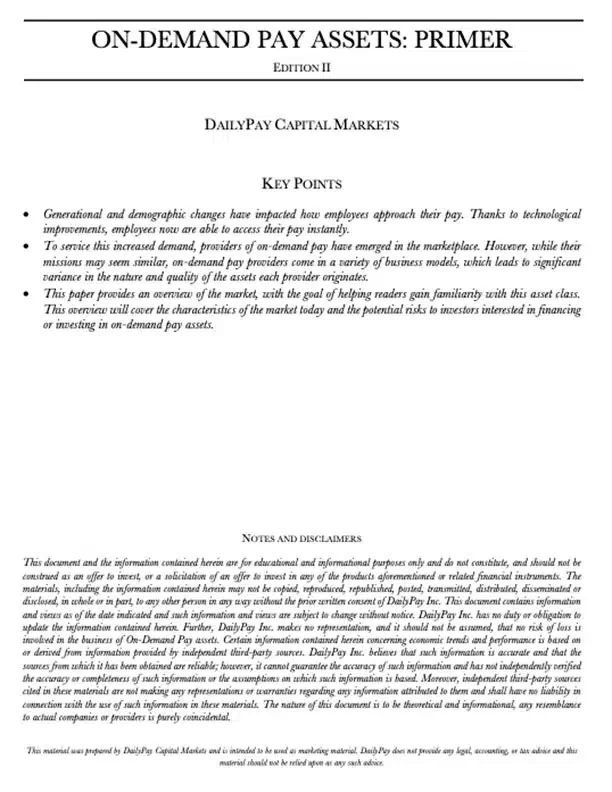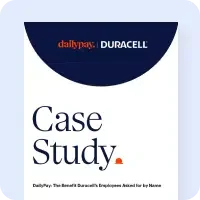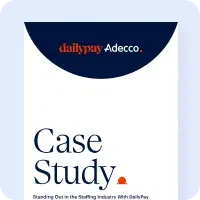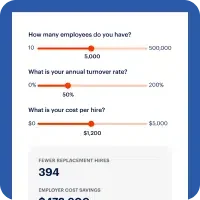
As on-demand pay technology continues to gain popularity, it may seem overwhelming to try to understand how it all truly works. With a number of different models, each of which functions in a completely different way, it may seem nearly impossible to “compare apples to apples” and choose the provider that would be the best fit for your company. This white paper breaks down:
- Why on-demand pay is such an important benefit for today’s workforce
- How various on-demand pay providers work
- Various risks to assess when choosing an on-demand pay provider
On-Demand Pay Assets Primer
The ODP benefit is one of the first innovations in payroll since direct deposit came about more than 50 years ago. While the payroll industry has been slow to adopt new solutions, market changes have made this benefit an increasingly vital requirement for many businesses. ODP generally refers to payments made by a third-party vendor/provider to an employee prior to a scheduled payday. The payment amounts are repaid at a future point in time, typically on payday, either by the employer or employee. These payments can be thought of as assets and the third-party vendors/providers as asset originators.
In the last few years, a myriad of technology firms have emerged in the marketplace to offer on-demand pay. Although they may share a common mission – to provide early access to pay – these ODP providers differ drastically. Since each ODP provider offers a unique product to its client, the assets originated by these providers have a different legal, risk and reward profile. In order to distinguish between the assets, it is important to focus on three primary aspects with respect to the way providers originate assets:
- Repayment Source
- Worked Hours Validation Process
- Fee Structure












